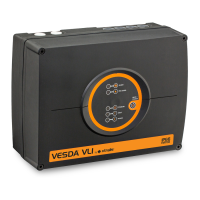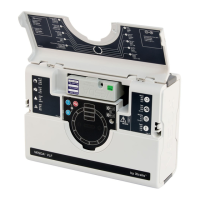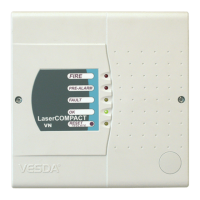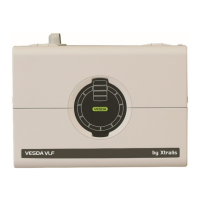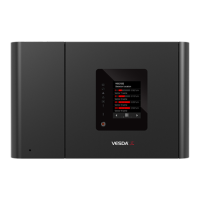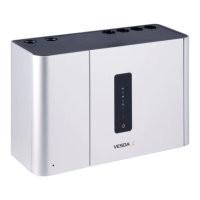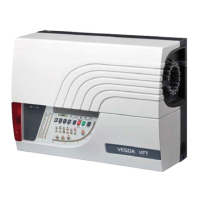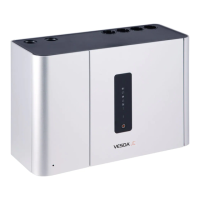VESDA Pipe Network Installation Guide VESDA by Xtralis
26 www.xtralis.com
5.3 Cabinet and Rack Detection
Legend
A Retainer clips
B Sampling hole
C Equipment cabinets
D Capillary tubes
E Rigid drop pipe
F Under floor void
Figure 5-15: In-cabinet sampling using capillaries & drop pipes
5.3.1 In-Cabinet Installation
In-Cabinet sampling uses capillary tubes, microbore or drop pipes to sample the air from within a cabinet,
such as a switching console or an equipment rack. A capillary tube or microbore can be inserted into the
cabinet either from the top of the cabinet, or from the under floor void.
Warning: Ensure that the power is switched off prior to commencing work on the cabinet. Make sure that
there are no electrical wires that may be damaged while drilling the hole.
Caution: Check to see that dust or debris such as metallic shavings from drilling the holes will not
damage the equipment.
In-Cabinet sampling installation from the top:
1. Determine the entry point into the cabinet - Drill an appropriate size hole in the cabinet top, or use an
existing cable entry port.
2. Install the sampling pipe using Tee adaptors where the capillary tubes or drop pipes are to be run to the
cabinet.
3. Attach appropriate sized reducing connection to the Tee.
4. Attach capillary tube or drop pipes to the reducing connector.
5. Run the capillary or the drop pipe into the cabinet.
6. Unless specified otherwise, insert the capillary tube or drop pipe just below the interior of the cabinet
top to a depth of 25 mm to 50 mm (1 to 2 inches).
7. Attach sampling point fitting to ensure the correct sampling hole size.
Note: Microbore installations only require steps 1 and 5 to 7.
In-Cabinet sampling installation from under the floor:
Warning: Ensure that the Power is switched off prior to commencing work on the cabinet. Make sure that
there are no electrical wires that may be damaged while drilling the hole.
Caution: Check to see that dust or debris such as metallic shavings from drilling the holes will not
damage the equipment.
1. Determine the entry point into the cabinet - Drill an appropriate size hole in the cabinet floor, or use an
existing cable entry port.
2. Install a sampling pipe as per the guidelines for Floor Void Installation in Section 5.1.3 on page 19, but
do not drill sampling holes unless specified in the pipe network design or IDP specifications.
3. Use Tee adaptors where the capillary tubes or drop pipes need to be attached.
4. Fix appropriate sized reducing connection to the Tee.
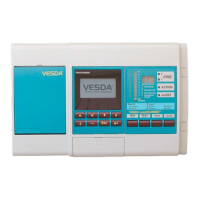
